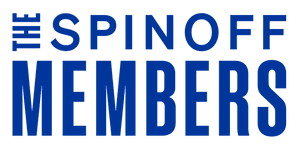The NBR’s Rich List is always a big day for New Zealand’s wealthy elite. So who’s on it, who’s up, who’s down, and how did they get there? Here are 10 things we learned.
Technology still isn’t a golden ticket. Among the top 50 entries, there are a grand total of four tech entries. And of those, only Xero founder Rod Drury, and TradeMe founder Sam Morgan, can really make a claim to having real NZ-based success (and in Drury’s case, even that is debatable given Xero’s global footprint) The others on the list are Bulls-born Victoria Ransom, who made it big in the California startup scene, and Paypal founder Peter Thiel, who effectively bought NZ citizenship. There are more tech millionaires further down the list, but perhaps not as many as you might expect.
Property still is the golden ticket. It’s almost redundant to point out at this stage, but owning property (which generally requires wealth to start with) remains the best way to get really really rich, if this list is anything to go by. There are eight people in the top 25 (including the Goodman family, Sir Michael Friedlander and Peter Cooper among others) who made their money this way, including three billionaires, and the industry only gets more prominent as you move down the list.
There is still money to be made in media. They might not have the name recognition of someone like Rupert Murdoch, but Sir Julian and Nick Smith wield a similarly immense power over what people in the lower South Island read. As the latest scions of the family behind Allied Press, they own the only newspaper company in the country which is currently expanding, along with a range of magazines and local Dunedin channel Star TV. And they’ve done it by doing the opposite of what the major media companies have done – the Otago Daily Times hasn’t pivoted to video like NZME, and the company hasn’t slashed back on its regional and small town titles like Stuff. It has simply put journalists on the ground to do local news, and then charged readers for it. Incredible, eh?
Few will have heard of the richest person currently in parliament. The beers at Bellamy’s will be on Rangitikei MP Ian McKelvie tonight. He may be well down National’s list at number 34, but he’s also the only sitting MP on the Rich List this year. Former MPs like Sir John Key and Bob Clarkson (remember the guy who kept talking about his testicles?) also make an appearance.
The ageing population is a growth industry. UK retirement home mogul Cliff Cook’s wealth is up. Radius Care’s managing director Brien Cree’s wealth is up. The retirement facility developing Hurst Family’s wealth has gone up. John Ryder, who founded Ryman Healthcare and now is making big investments in retirement homes – guess which direction his wealth has gone? Yep, that’s right, he’s up too. With a huge cohort of baby boomers providing demand for these services across the Western world, it’s little wonder why.
Sir Bob Jones has finally made it to the magic billion mark. He’s a property tycoon, and perhaps the most high-profile rich dude of the last four decades. But it’s only now that Sir Bob Jones’ wealth has hit a billion dollars. That has grown dramatically alongside the value of commercial property.
Fay and Richwhite are still together. Well, on the Rich List they are at least. By a statistical quirk, David Richwhite and Sir Michael Fay are side by side, at 16th and 17th place respectively. How nice for them.
Apparently, it helps to be white. Seriously, you look through the profile pictures, and it’s almost inescapable. It’s not that the list is exclusively white or anything like that, it’s just that the vast majority of people on it are white. It’s either a complete coincidence, or related to a whole lot of reasons intersecting with class, inheriting family capital and systemic advantages.
Wealthy people are good at hiding how much money they’ve got. Take, for example, the curious case of Steve Owen, who the NBR plucked out as an example of this. He’s an expat living in Britain, he’s not on the rich list, and he might well be a billionaire. But nobody really knew an awful lot about him and his wealth until his ‘globetrotting’ daughter Kimberley became a high profile socialite.
The rich are getting richer. The NBR estimates that only 2% of those on the list from last year have seen their net worth fall. They’ve put that down to a strong sharemarket and “booming” commercial property values. But with the overall tally of money held by these individuals topping $10 billion for the first time, might it just be that wealth begets more wealth?



